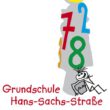G1: Die Personalpronomen und die Formen von to be (PERSONAL PRONOUNS AND THE FORMS OF TO BE)
Singular: (long form/short form)
I am from London. I’m from Manchester.
You are nice. You’re cool.
He is my friend. He’s my dad.
She is at home. She’s in school.
It is a desk. It’s a chair.
Plural: (long form/short form)
We are in 3/4f. We’re in 3/4d.
You are funny monsters. You’re boys.
They are new. They’re girls.
G2: Die Verneinung von to be (THE NEGATION OF TO BE)
Singular:
I’m not in Nuremberg.
You’re not from Germany. (oder: you aren’t)
He’s not my grandpa. (oder: he isn’t)
She’s not in love. (oder: she isn’t)
It’s not a computer. (oder: it isn’t)
Plural:
We’re not dumb pupils. (oder: we aren’t)
You’re not a teacher. (oder: you aren’t)
They’re not in the future. (oder: they aren’t)
G3: Die Possesivbegleiter (THE POSSESIVE DETERMINERS)
My name is Mr.Tailor.
Your friend is Robert.
His dog is beautiful.
Her bike is dirty.
Its box is big.
Our tablets are awesome.
Your time is nearly up.
Their school is in Furth.
G4: Die Mehrzahl von Nomen (THE PLURAL OF NOUNS)
Singular:
a book
a dog
a pencil case
Plural:
two books
three dogs
four pencil cases
G5: Dort ist… / Dort sind… (There is / There are)
There is a rabbit. (Singular)
There’s a cat. (Singular, Kurzform)
There are dogs. (Plural)
Hier gibt es eine Präsentation zum Herunterladen, um sich selbst die ersten 5 Grammar-Kapitel abzufragen. Erstellt wurde sie von Hannes und Jonas.
Keynote: Englisch-Abfrage
PowerPoint: Englisch-Abfrage
PDF: Englisch-Abfrage
G6: Das dort und diese dort (THIS/THAT AND THESE/THOSE)
Wenn man zwei Dinge oder Personen miteinander vergleicht, benutzt man zuerst this / these und danach that / those.
Singular:
This is my English book and that’s my exercise-book.
Plural:
These are chairs and those are desks.
G7 Fragen und Kurzantworten mit to be (QUESTIONS AND SHORT ANSWERS WITH TO BE)
Wie im Deutschen ist bei einer englischen Frage das Prädikat und das Subjekt vertauscht:
Am I a teacher?
Yes I am. No, I’m not.
Are you crazy?
Yes, you are. No, you aren’t.
Is he smarter than me?
Yes, he is. No, he isn’t.
Is she a pupil?
Yes, she is. No, she isn’t.
Is it smaller than me?
Yes, it is. No, it isn’t.
Are we a team?
Yes, we are. No, we aren’t.
Are you in school?
Yes, you are. No, you aren’t.
Are they in Nuremberg?
Yes, they are. No, they aren’t.
G8: Fragewörter (QUESTIONS WITH WHERE, WHO, WHAT, HOW)
Where is my cat? Where is the sun in the universe? (where = wo)
Who is the most beautiful football-player? Who is my best friend? (who = wer)
What is a car? What are you watching on TV? (what = was)
How big is my dog? How are you? (how = wie)
G9: Der Imperativ (THE IMPERATIVE)
Bring me your tablet, please.
Sit down and be quiet, please.
Look at my cat, please.
Do not be silly.
Don’t sing too loud, please.
Englisch in Großbritannien und den USA…
Auf dieser Seite werden mit Bildern die Wörter erklärt, die in Großbritannien anders heißen als in den USA. So heißt Taxi im britischen Englisch auch „taxi“, aber im amerikanischen Englisch „cab“. Oder auch Pommes: Man nennt sie in England „chips“ und in den USA „fries“.
